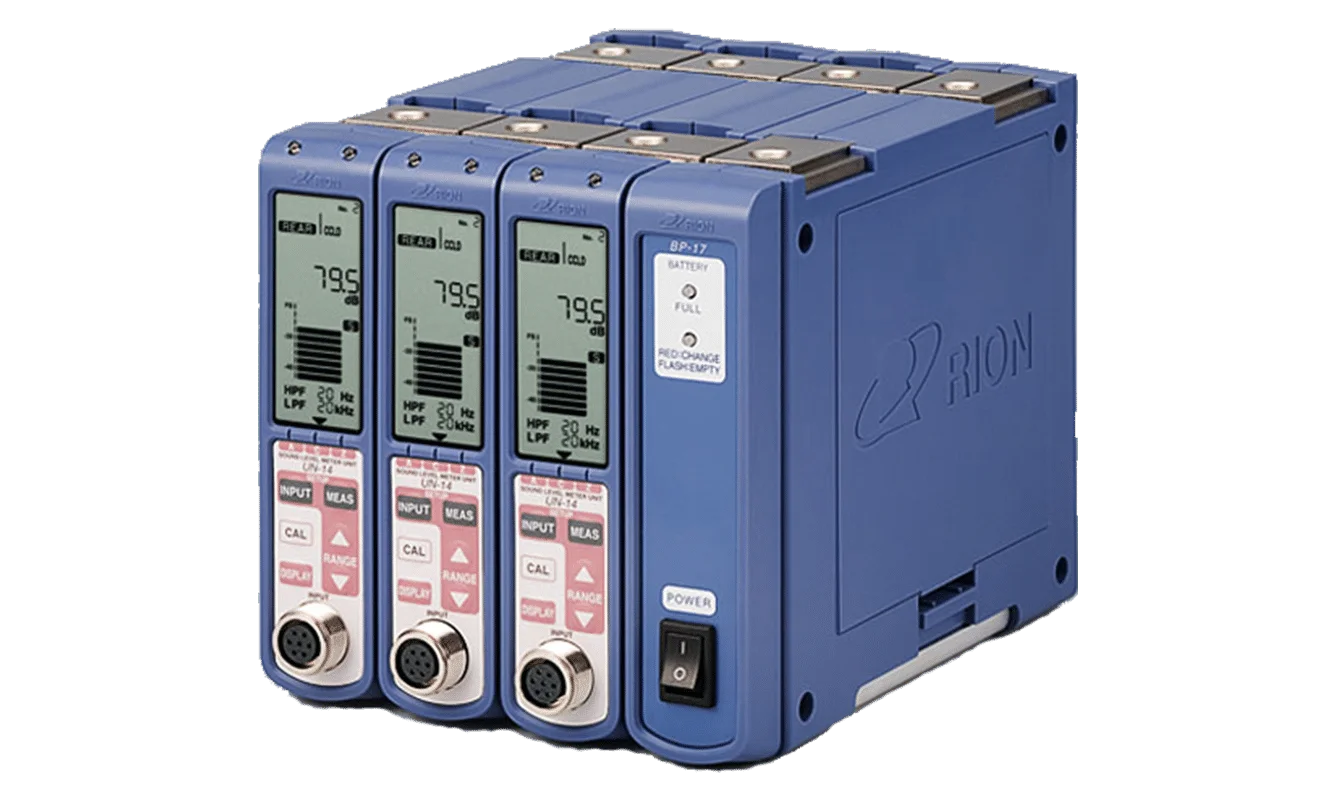Microphone Channel for Rion’s Modular Multi-Channel System.

The UN-14 is a noise channel for Rion’s permanent, wired, multi-channel vibration and/or sound measurement system which connects to a normal PC via LAN or USB. The Rion UV-22 can be used to control up to 16 Rion UV-15 vibration or Rion UN-14 sound channels. The system is controlled by a simple programme on the PC so, when the time arises to change computer, you can still use the Rion UV-22/UV-15/UN-14 system and just re-install the lightweight software on the new machine. The system is totally modular so the channel count can be varied to suit your application.
The UN-14 can be used with a wide range of microphones and it can either be used on its own or as part of an up to 16 channel (sound or sound & vibration) system controlled by the Rion UV-22.
It supports CCLD and TEDS compliant microphone pre-amplifiers and the direct microphone input supports measurement microphones which require 0, 30, 60 and 200V polarisation voltages. The UN-14 has a clear backlit display which shows level (as both numeric and a bar graph display) and important measurement parameters including time and frequency weighting.
The UN-14 has a wide range of user settings, which are extended even further when used with the Rion UV-22, and features a Resume function that memorises and stores all settings which are applied when the unit is next switched on.




Please fill out the enquiry form below and we’ll get back to you quickly.
Please fill out the enquiry form below and we’ll get back to you quickly.